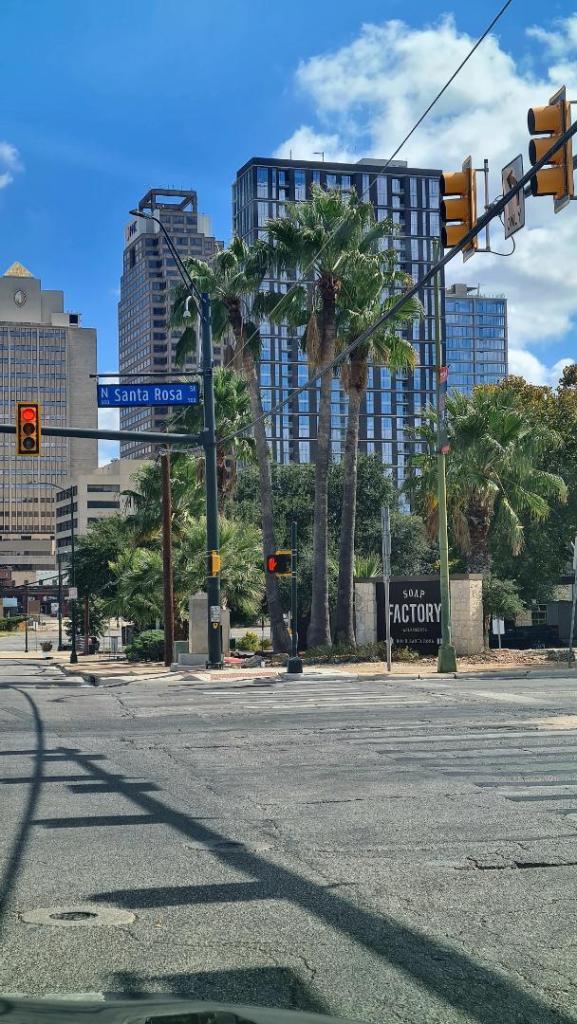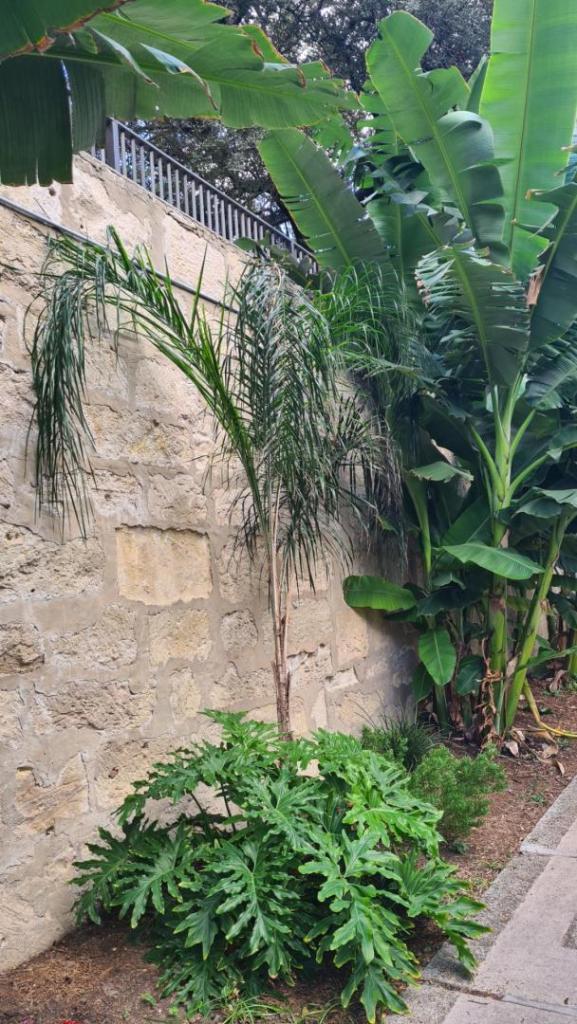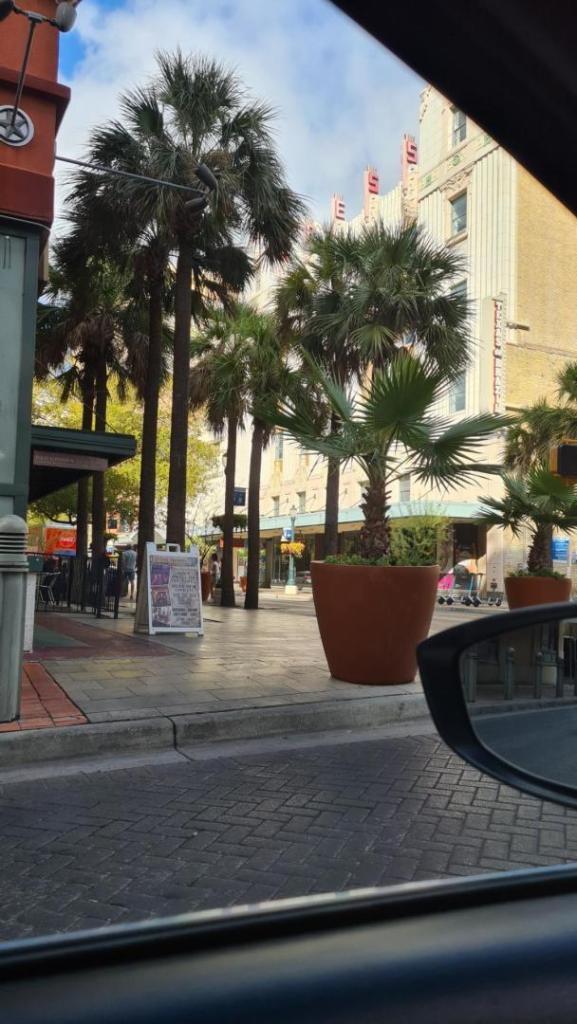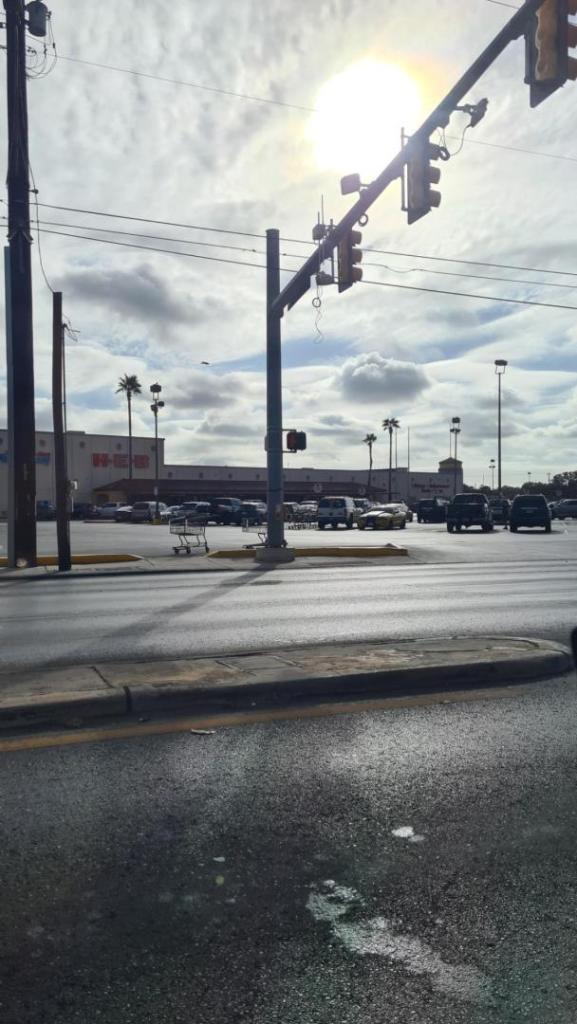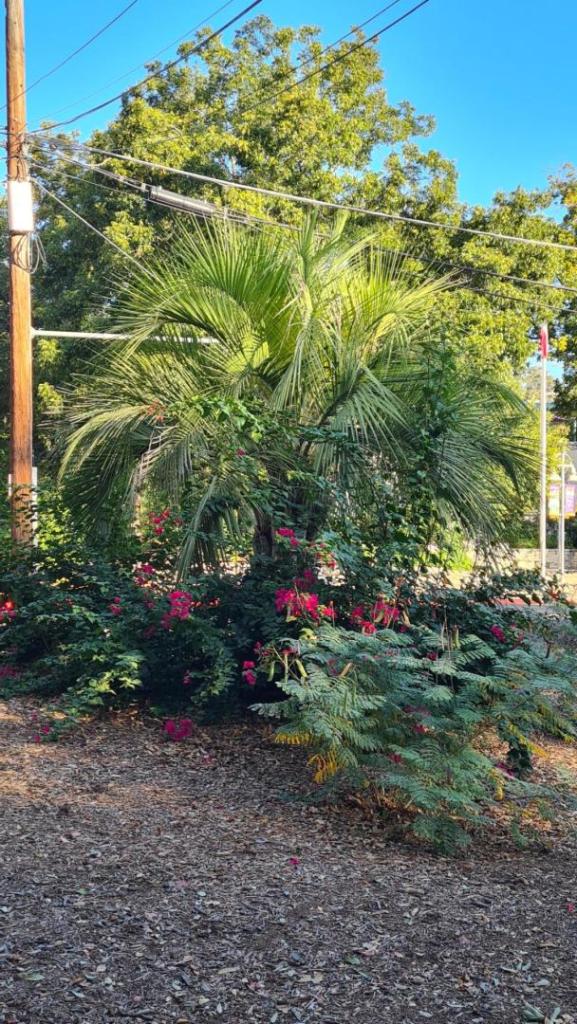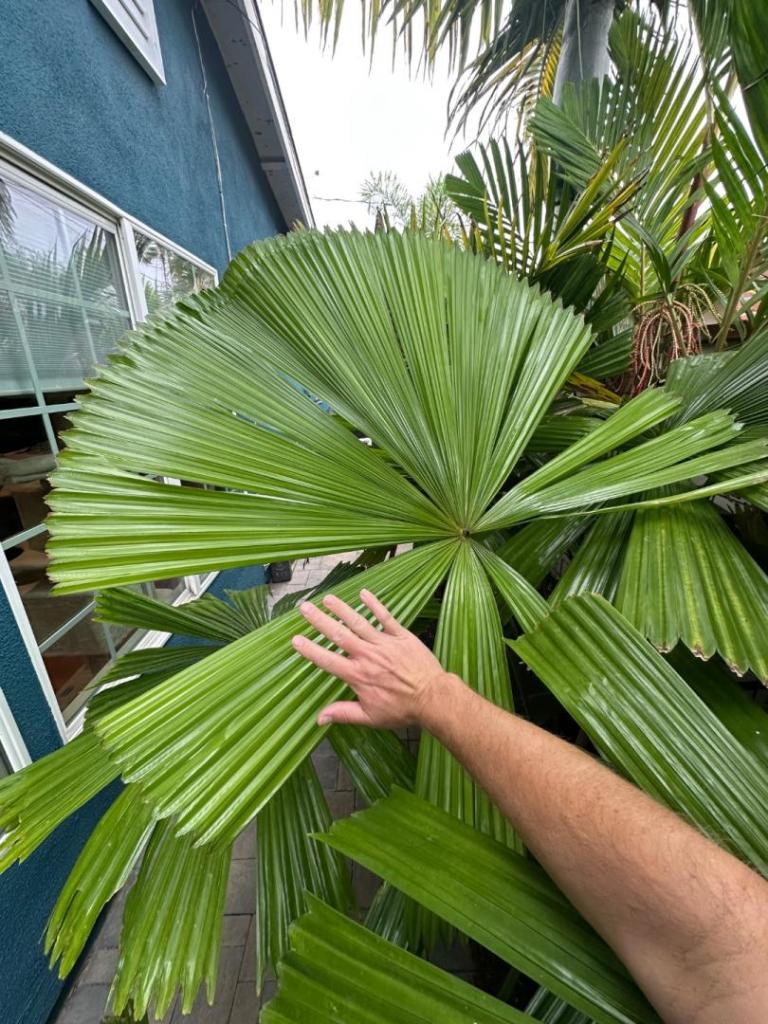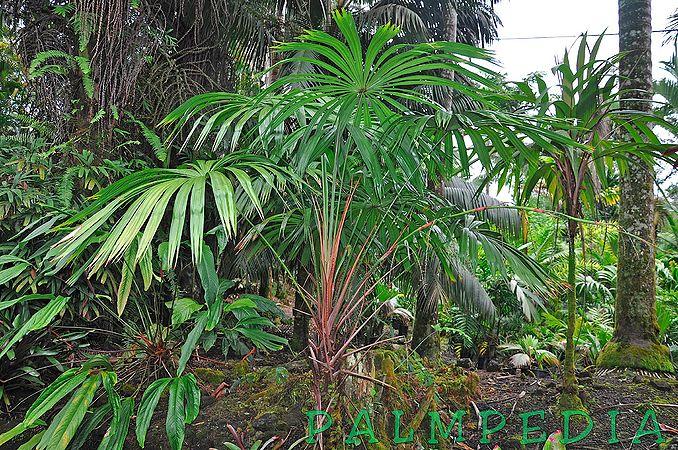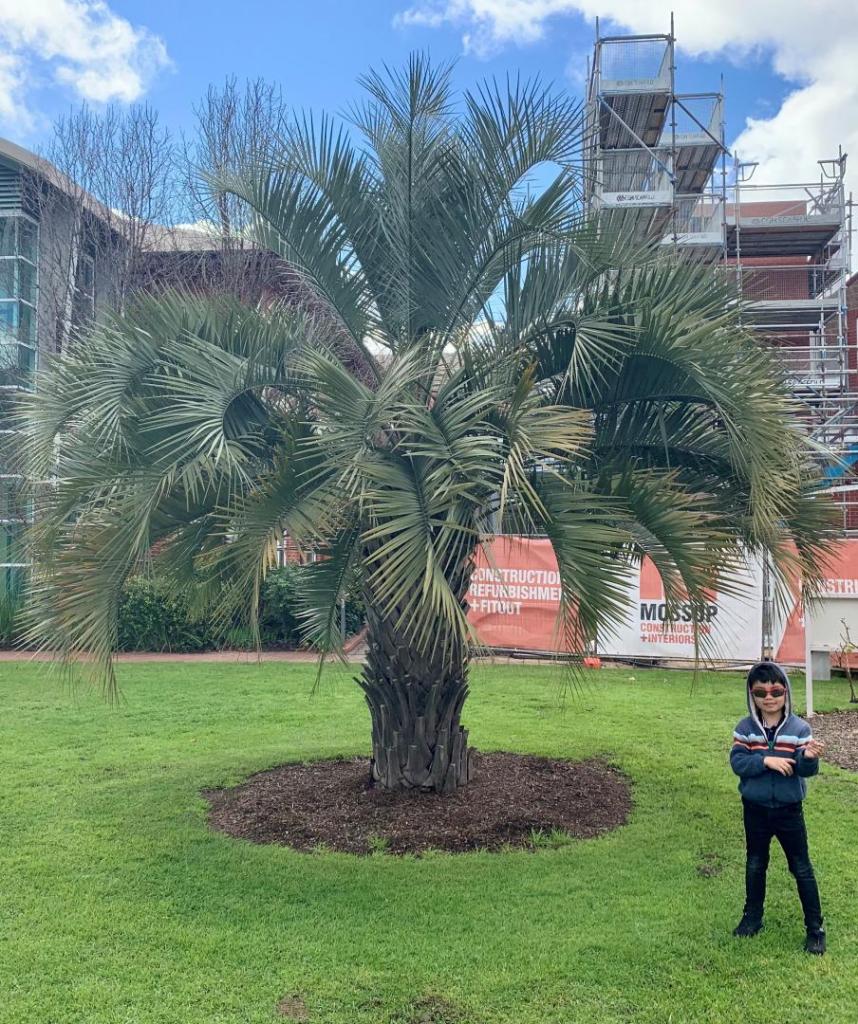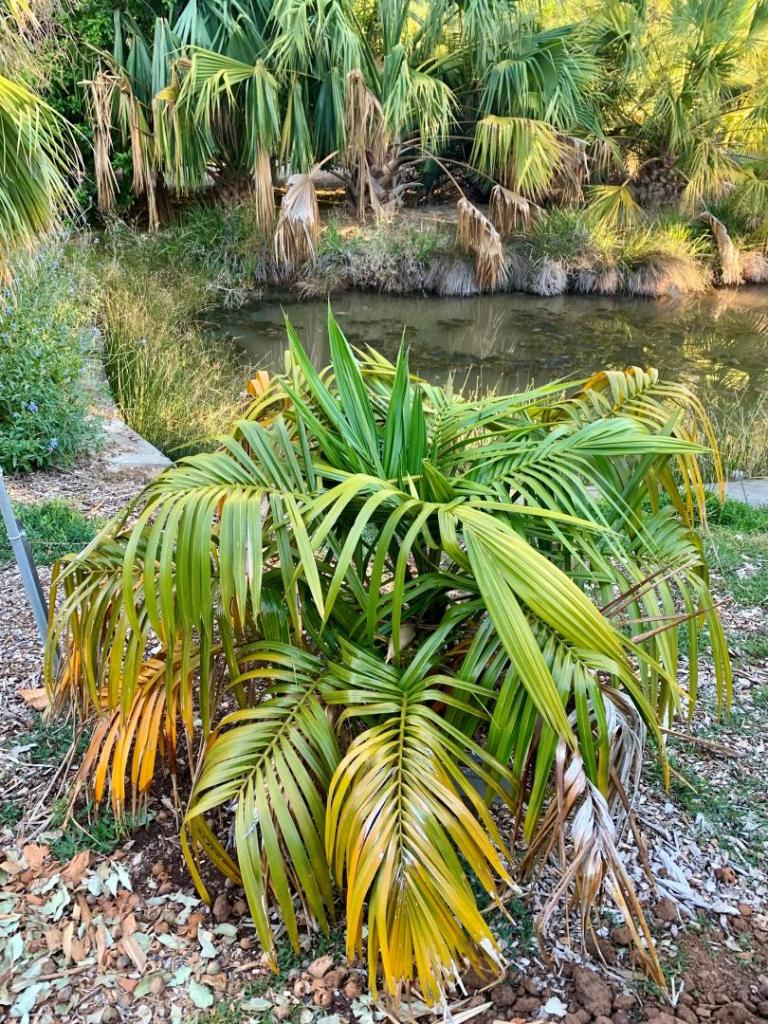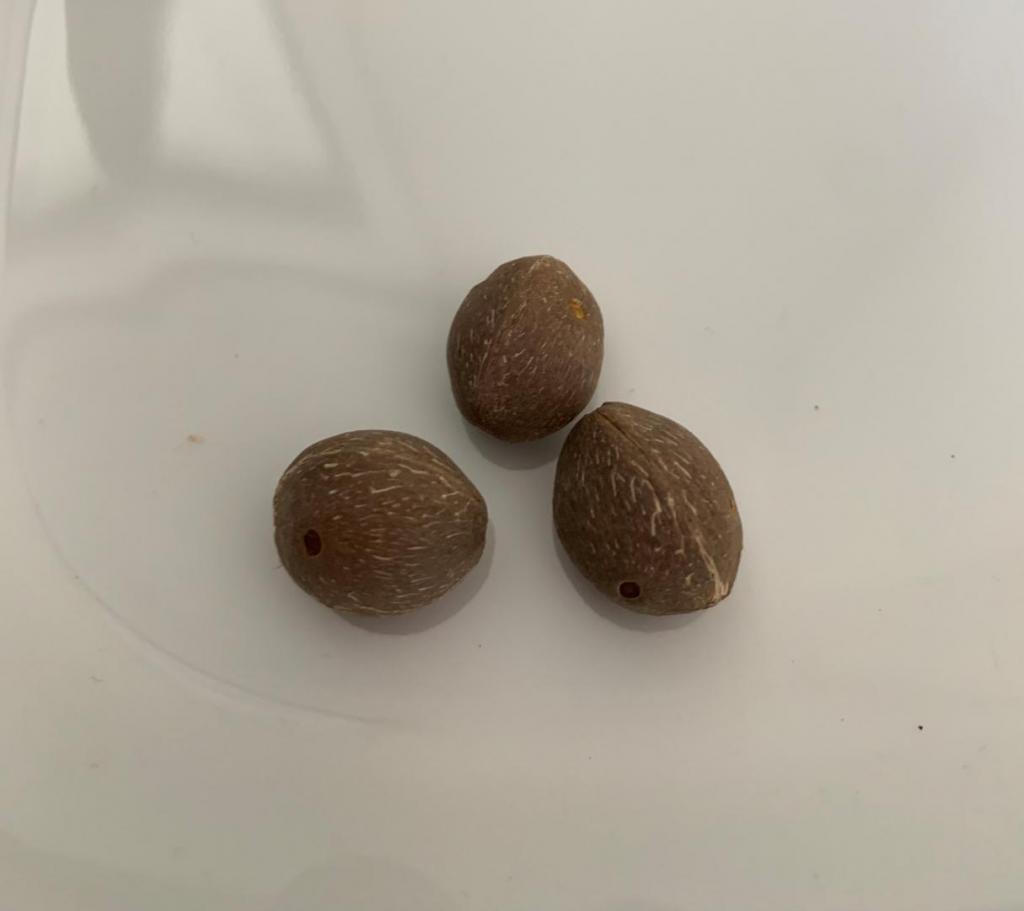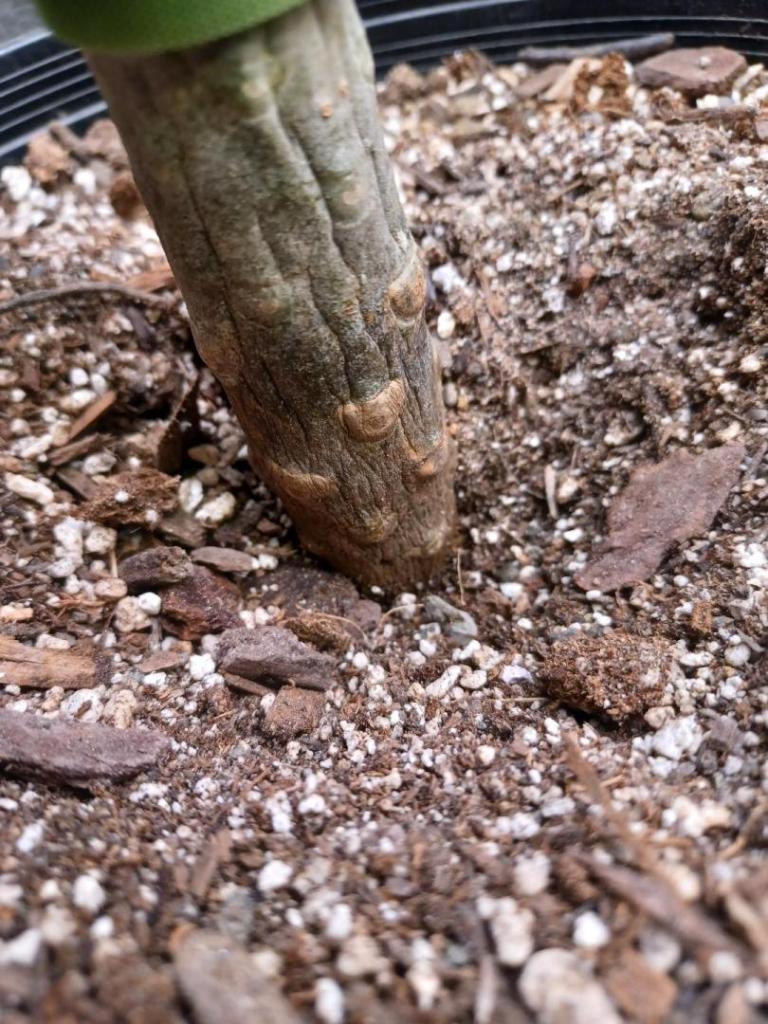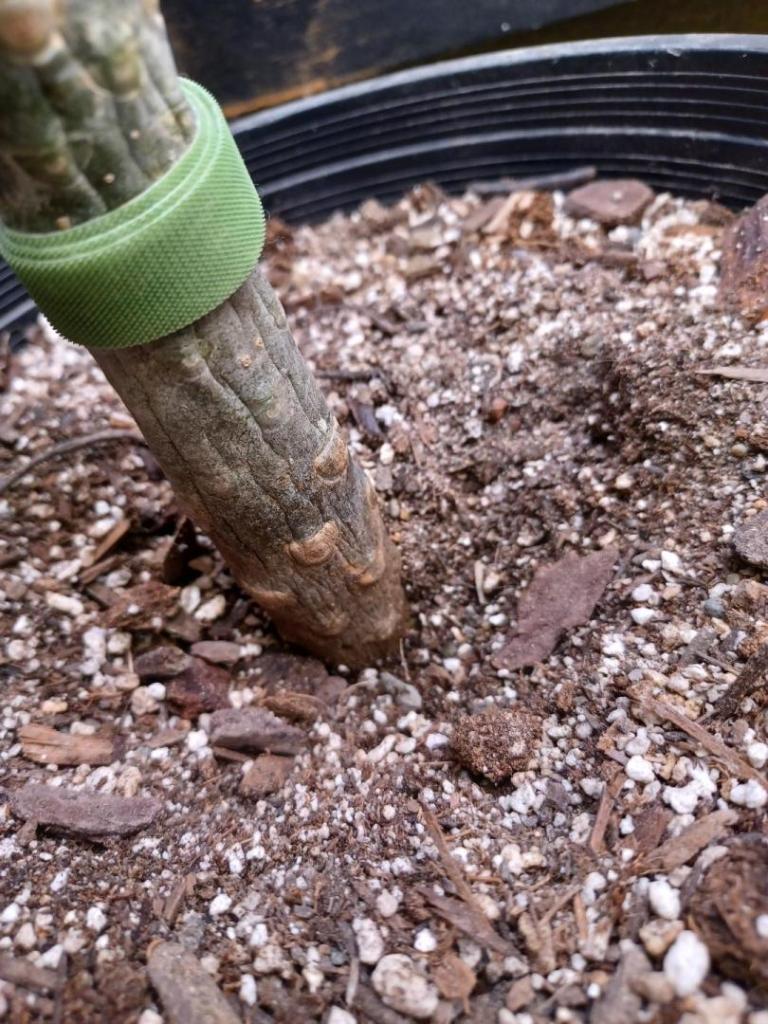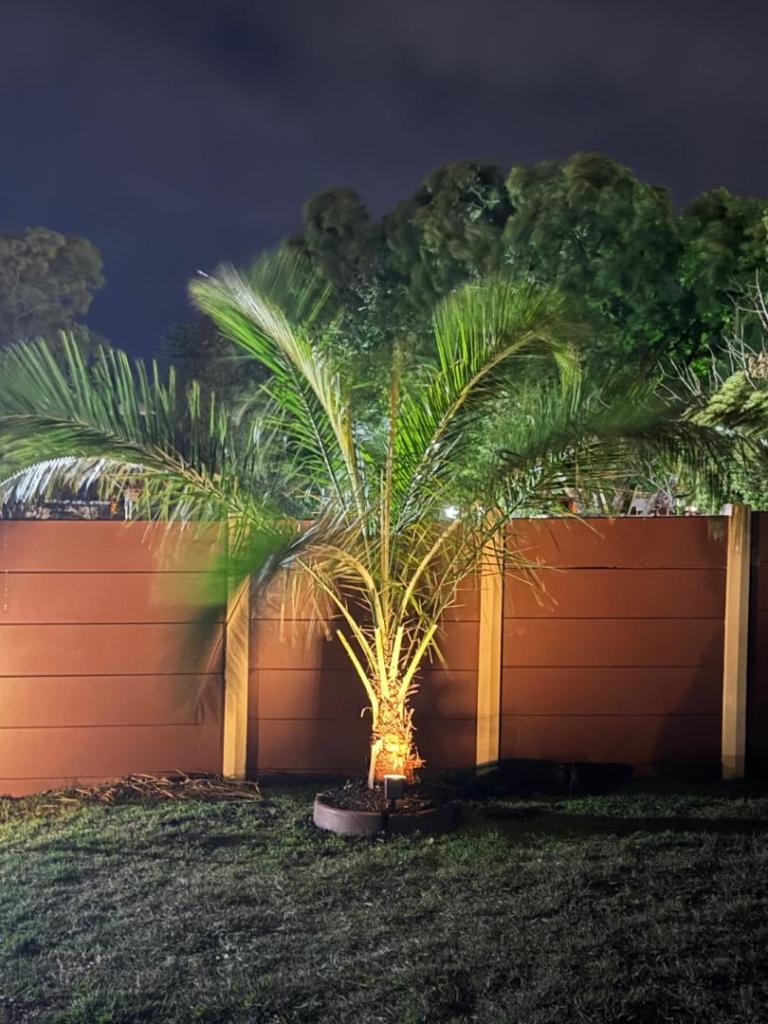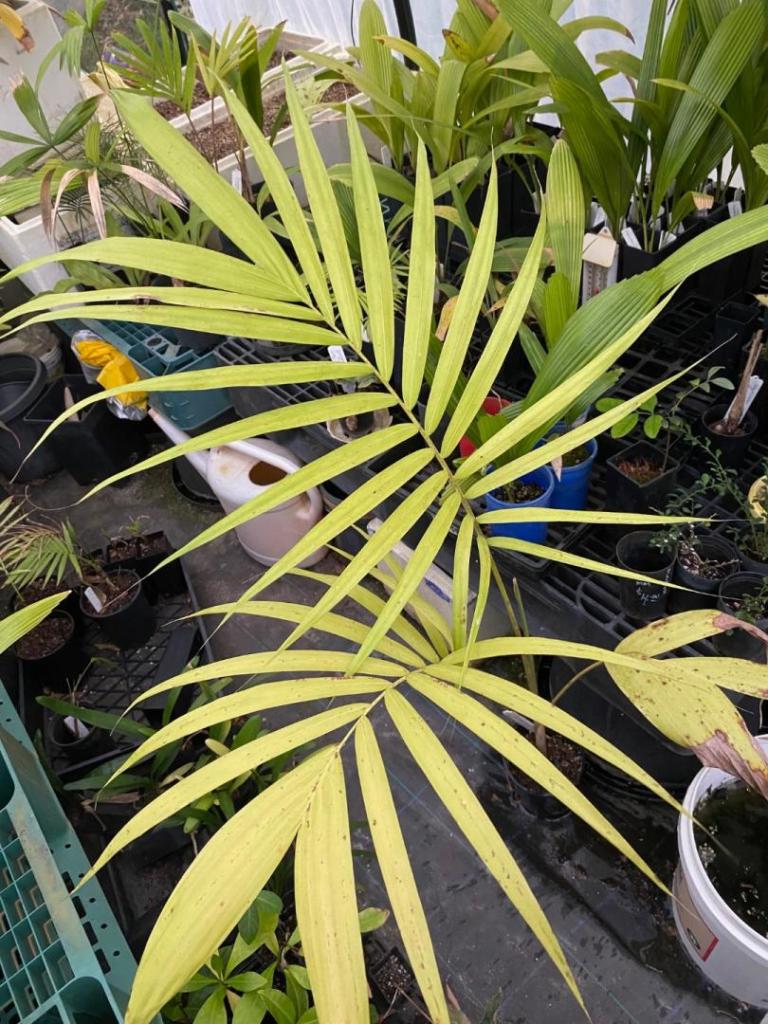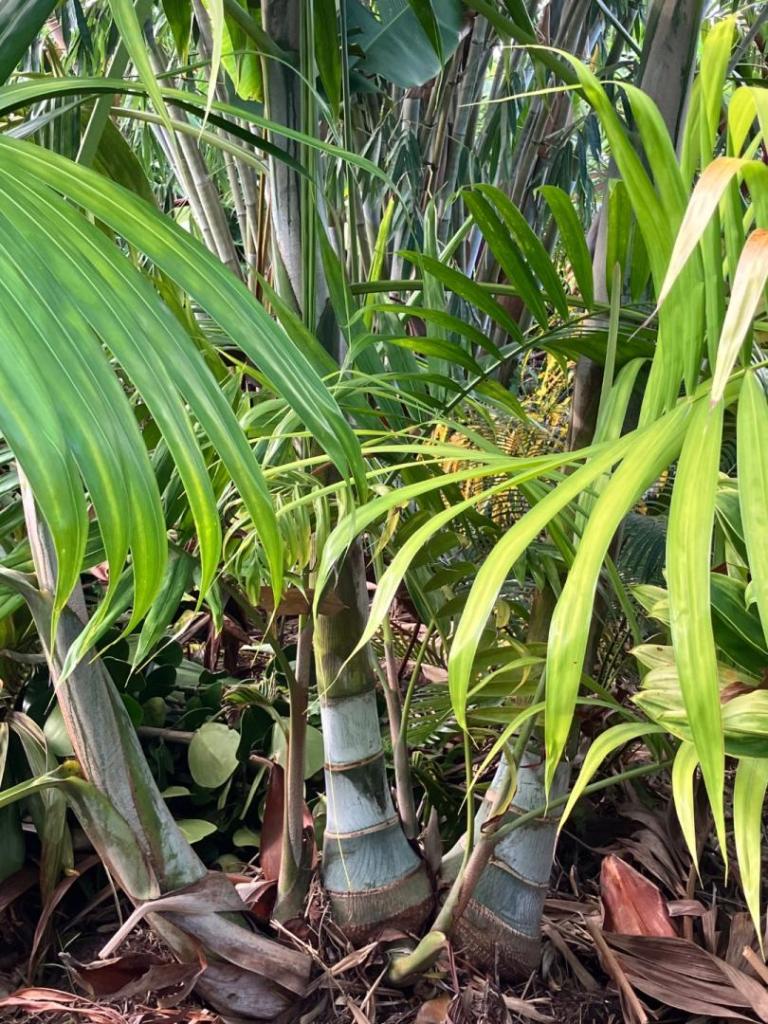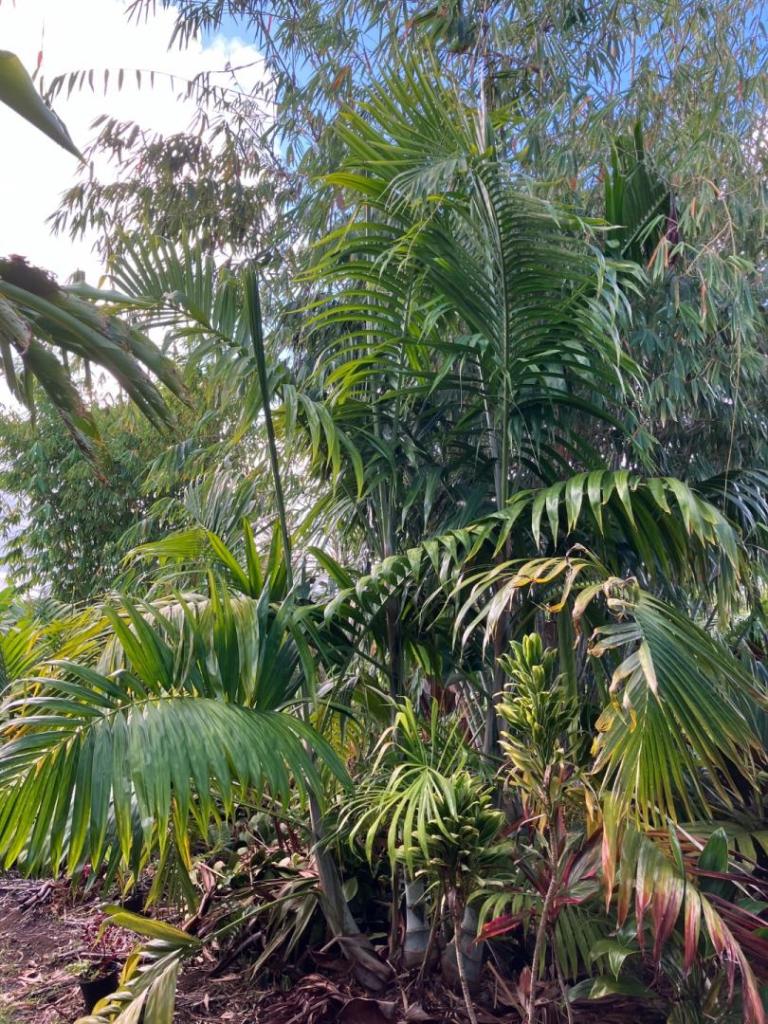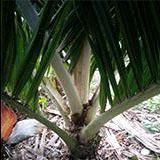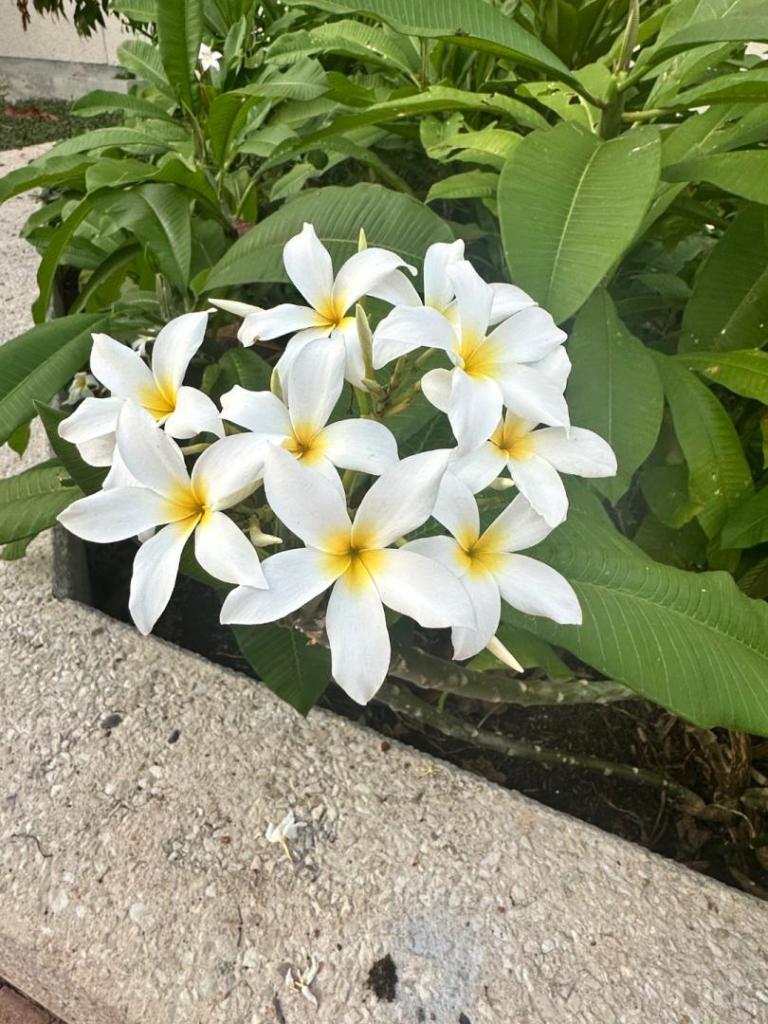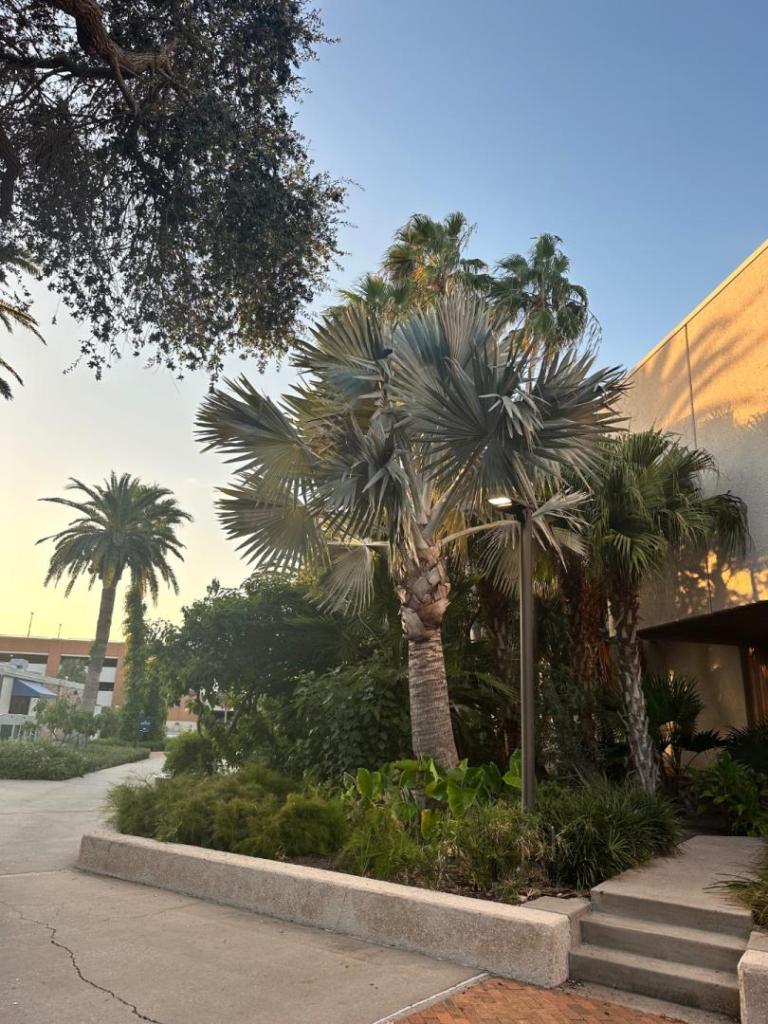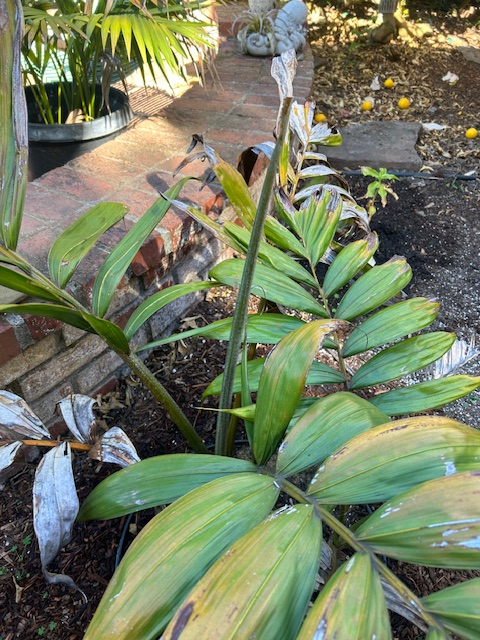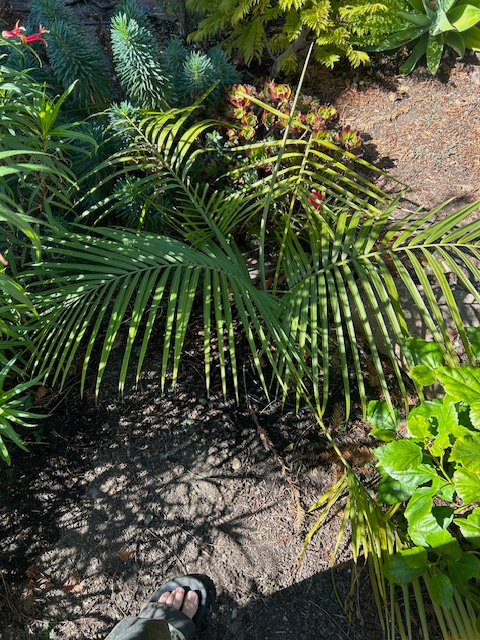Leaderboard
Popular Content
Showing content with the highest reputation on 10/24/2024 in Posts
-
Fall Update III - Chrysalidocarpus Corner et. al.. Chrysalidocarpus prestonianus: The twin on the left was getting one of those weird fungal infections. It received a Banrot treatment that seems to have wiped the fungal issues out. If you have a palm starting to show fungal issues, this might be a good way to stop it in its tracks. Chrysalidocarpus pembana Chrysalidocarpus cabadae Chrysalidocarpus lanceolata Chrysalidocarpus leptocheilos: The newer palm has a better location and is outgrowing the older specimen. Chrysalidocarpus decaryi Chrysalidocarpus lutescens Satakentia liukiuensis Hyophorbe lagenicaulis Hyophorbe verschaffeltii Chambeyronia oliviformis Archontophoenix cunninghmania: The may drought nearly killed both of these. One is OK, the other is 50/50 on ultimate survival. Howea forsteriana: The drought hit these, but not as bad as I thought consistent temperatures over 95F with no rain would do. You can still see drought damage on my quadruple clump and the smaller seedling right next to them, but they are doing well considering the circumstances. Licuala grandis Allagoptera arenaria: This one is back to flowering, although it is hard to see in the photo. Cocos nucifera 'Green Malayan' Container Photo #1: From front to back, Phoenix theophrasti, Medemia argun community pot, and Hyphaene coriacea. Container Photo #2: The outside rack holding Veitchia arecina, Dictyosperma album 'conjugatum', a recovering Frankenbrahea, Livistona saribus, Kerriodoxa elegans, and a few other gems. Container Photo #3: A few more Medemia argun and Hyphaene coriacea babies. Container Photo #4: A few Jubaea chilensis seeds and Hyphaene coriacea seeds. As you can see in the middle cup, Hyphaene doesn't mind sprouting with no medium around it. Probably two more updates coming. With the hurricanes, it's been a lot to clean up sections of the garden.7 points
-
Here it is in the ground, with and without the little shade structure I made for it. Hopefully this will keep it happy for a year or two, after which I hope it won't need it. Number of palm species in the garden is up to a dozen, not much I know but I'm working on it. Thanks again @Darold Petty and @Jim in Los Altos for the inspiration.7 points
-
Another rare palm gets planted in the garden adding to the collection. Cool tolerant surviving winter without any problems. Palms from Thailand do well in my climate so I cannot see this one being any different. A great understory palm to have in the garden with its silver underside coloured leaf and unusual leaf shape should add a touch of tropical look in the garden, even as a seedling it looks impressive with its deep green colour.4 points
-
I looked for a good example of this subject on this forum but found none so I thought I would help document the speed of the ever popular queen palm. There have been many comments over the years on how fast this palm is and there's an excellent example from an old thread from the main forum. I'll follow up with what I have experienced here in the RGV of deep south Texas. Purchased this palm as a 7-gal with approximately 9' overall height in spring, 2023. Here it is a year and a half later in October 2024 with the container next to it for scale. It's approximately 13' overall height now - roughly 2.67' per year! The base has really beefed up too.3 points
-
@Merlyn: The Satakentia is under oak canopy and gets all day dappled light. They grow fine under those conditions. @D. Morrowii: Appreciate it! The cleanup pile just got hauled away today, so there is a big hole in the front yard to fill in with dirt... from somewhere. @flplantguy: I have a feeling you'll enjoy growing them. One thing they tend not to like is changing light levels. @mnorell: I appreciate you weighing on on the coconuts. Certainly, it was good to have someone point out that was I had labeled on the pot as a Butia was actually a stray Roystonea seed all of those years later, with time for me to move it further away from the house. The "Fiji Dwarf" has been the topic of at least two other conversations as the form look more like a Malayan than a Fiji Dwarf. The first person to say it didn't look like that particular variety was @Plantking165 during a garden visit. Time will tell, but I suspect you are right. It was purchased at Premier Growers in St. James City. You may be right about the others as well As for the history of all of the coconuts, the "Atlantic Tall/Jamaican Tall" and the "Panama Tall" came from Calusa Palms Nursery by request for those varieties. There's certainly no harm in @Zeeth or others jumping in and stating an opinion. To make the Panama Tall look-over easier, here is a recent close-up photo of the petioles: With the CFPACS 2024 Fall Meeting coming up, I only had time to clean up one set of plants, so a mini-update with the Latania lontaroides between the Carpentaria acuminata twins.3 points
-
3 points
-
I wouldn't really call it a garden, but I'm semi-experimenting with palm trees in El Centro, CA, in the Sonoran desert. I don't have any land, so am planting them at one of my works and unfortunately it is under construction and irrigation is frequently cut off when I'm out of town and I return to many dead palms. It's very frustrating. Anyways, I've had fun experimenting with palms, and have unfortunately had many untimely deaths due to irrigation being cut off or getting run over by construction machinery. I'd like to highlight the African oil palm, however, and ask if anyone else has tried them in California or Arizona. This palm is 2 years old from seed. It has spent one summer and one winter in a pot and one summer and one winter in the ground and has been tolerating FULL SUN from noon to sunset on a west facing wall without any issue! I am so shocked. It is frequently 120 F here.2 points
-
A tree that’s native to my area and also in my garden. The old man banksia May Gibbs wrote about them in snugglepot and cuddle pie. A plant that needs fire to regenerate. They can actually catch fire with heat from a bush fire 20 meters away bursting into flames creating spot fires. A beautiful tree with an amazing flower slow growing to reach a decent size. A true Australian beauty.2 points
-
Acquired a few years back as H. chaunostachys, which has now been renamed H. ledermanniana. Fast grower and becoming a beautiful palm with arching leaves and grey/white elongated crown shaft. The origin of this palm came from mother plants on the Kona side of the island with seed originally collected years ago on Papua New Guinea. Tim2 points
-
2 points
-
2 points
-
2 points
-
2 points
-
2 points
-
I will "third" the opinion on the Jungle Jack's plants, I don't know why on earth they put everything into that peaty mix. Growing Plumeria in such a mix, especially through the cool/cold seasons, requires very controlled conditions in regards to watering (i.e., in a greenhouse with very sophisticated moisture metering; or just no water at all of course if they are defoliated). I can only assume they want everyone to "come back for more" next year. Similar to the way growers present Adeniums to the world in what invariably will become a soggy, peaty mess...the cure being exactly what Nathan says above, carefully hose off their peaty mix, and re-set the plant into a very chunky/gravelly mix of pumice/perlite, sand, LECA, coconut-coir chunks (not fines) or similar. I have lost quite a number of JJ plumerias and I assumed it was because of their bad mix but could also be because of what Josue notes above in terms of inadequate rooting. That is very, very frustrating for a premium-priced plant.2 points
-
Yeah, to check for spear pull just tug lightly upward. Don't yank on it. If it is solid then maybe the old fronds were twisted up in the storm. A direct downward gust could split the frond bases all at once...thus they all browned and died at the same time. I would mark the spear leaf and adjacent fronds horiztonally with a sharpie. If it is growing vertically an inch or so on a regular basis then it has a chance. If the spear isn't growing after a few days then it's probably already d-e-d.2 points
-
2 points
-
@t76turbo welcome to PalmTalk! I don't see anything in the picture that looks like Fusarium, do you have any photos from a week or so ago? There are a number of diseases that can kill Mules, but generally not that fast. Fusarium is usually easy to spot on Mules, Queens, and Washies. One half (the left or the right, randomly) will just die...really fast. But it's almost always one-sided death, and very rarely will it be evenly distributed along each frond. I had one Queen die from Fusarium a while back. I was out in the yard and my wife walked out and said, "Why is half of that frond dead?" This is what it looked like: You can see one side is completely dead, and the other half is just starting to die. Here's the thread I posted on it: One important thing to note is that Fusarium Oxysporum v. Canariensis is different than Fusarium Oxysporum v. Palmarum. Palmarum kills Queens and Washingtonia and some Mules. Canariensis kills CIDP and apparently infects other Phoenix but doesn't kill them...just makes them kind of unhealthy. So if some of the fronds had that 1-sided death it's 100% guaranteed Fusarium and you should cut it down and dispose of it asap. Other possibilities are: A serious root rot issue - generally doesn't happen that fast. It might just look bad for years. Drowning in hurricane water probably wouldn't be that fast either. Ganoderma - can kill pretty quick too, generally affects the lower trunk and sometimes there's a visible mushroom shelf-like conk on the side. Sometimes there's no visible effect until you cut the trunk in half and see a big discolored area. Thielaviopsis - infects the upper trunk area, can also cause rapid death. Lethal Bronzing - can cause rapid wilting of leaf tips first followed by the whole frond. This is known to kill Butia and Queens, but to a lesser extent than Sylvestris. I've seen batches of Sylvesters die from apparent LB with Queens and Pindos in the middle unaffected. Wind-related damage - if the trunk is somewhat "loose" or wobbly it could have cracked the RIZ (root initiation zone) growing plate off the trunk, or severely damaged it. Likewise the upper part near the palm heart is sometimes damaged by heavy wind. That'll kill a palm really quick too. With the looks of the one in the photo, I doubt you can do anything to save it. Figuring out the cause of death is useful to avoid spreading a disease...if it is one. It may just be one random monster gust of wind that hit that palm the wrong way. If it's Ganoderma then replacing it with another palm in the same spot might be futile. Supposedly Thielaviopsis and Fusarium are floating around in the air all the time, and generally infect freshly cut wounds...which is why usually you avoid cutting fronds off early. Lethal Bronzing is primarily spread by leafhoppers, nothing to do to avoid infection other than choosing a resistant species.2 points
-
I can believe that if there was a good amount of snow on the ground. I have seen a good number of sabal minor and birmingham survive below 0F temps when there is snow cover. Everything above the snow is burnt to a crisp, while the snow insulates the growth point at or below snow line.2 points
-
Welcome to PT . I am sorry to see that in such a nice palm. I have no idea about what the issue is but I can say that I doubt it is moles. I have moles that mess up my flower beds and even on freshly planted small palms but they have never caused any issues with the palms. They are more of a nuisance than anything else. I think they eat insects like grubs . Harry2 points
-
Ok , my turn . The C. Macrocarpa I have is growing in full , hot sun so the red isn’t as impressive as shade grown ones I’ve seen. I brought this home from Maui as a small seedling many years ago. When it was young it had shade but now it has to tolerate sun. It was 87f today when I took the picture. The red will only last a couple of days . I get 3-4 fronds a year. Harry2 points
-
Enjoyed my day off from work, wife put me off the leash so I drove to some locations here in San Antonio including a park called Ladybird on the Westside. Sad to see gangs and homeless people have no respect for mother nature. I took a few shots and got out of dodge quickly. Some other pictures were taking at the zoo and tea garden , some others in and around SA. Some pictures were put up recently from other PT members2 points
-
2 points
-
1 point
-
Late last year I attempted this cross and got a grand total of 3 viable seeds for my effort. Fortunately though one of them has germinated. Could those of you that have this hybrid post a picture of it? There must be some sizable ones by now, although I've heard they can be pretty slow to get going. Butia odorata "mother: Syagrus schizophylla "father". Not a great example as it has been quite neglected. Resulting viable seed. First to pop.1 point
-
Hi all. On Saturday my wife and I visited @Jim in Los Altos's incomparable garden, about forty miles south of here. Jim's garden is absolutely amazing. His unusual/rare species are too numerous to mention (or photograph) and he is successfully growing species I could never dream of here. His winter lows are maybe a degree or two cooler than ours, but his summer highs are consistently 15°-20° higher, and he gets little fog. For example, his Rhapis excelsa looks terrific, while I just removed ours because it sulked for five years and the leaves wouldn't even go palmate. But there were a few plants in his collection which we discussed as being potentially adaptable to cool-summer climates which I would like to try. Among them are Chambeyronia macrocarpa and/or hookeri (of course) and Euterpe edulis (maybe orange crownshaft type). For reference, in addition to Rhapis, I have been unable to grow Prestoea montana and Cyphophoenix elegans which both croaked quickly, but Geonoma undata, C. onilahensis and all our Chamaedoreas are doing well. We have a small garden and can't accommodate species which get large. What do you all think? @Darold Petty?1 point
-
1 point
-
1 point
-
As Keith mentioned above, Dent Smith was the original founder of the Palm Society, and he included as inaugural members the most famous names in 20th-century palm studies and horticulture (including Fairchild, Montgomery, et al.). His property was in Daytona Beach, occupying four acres or so on the Halifax River. He was able to grow a large collection of marginal tropical species despite the occasional destruction from bad winters. He died in the mid-'80s but his wife, Doris, kept it going for decades until she passed away. The property was sold in 2013 but I think may still be relatively intact. He was highly involved in the planning and execution of the Florida Institute of Technology Botanical Garden. This brochure explains some of the species at that Botanical Garden today, largely due to his efforts. You can find much info on his gardens and his trials and tribulation by searching old issues of Principes/Palms on the palms.org website.1 point
-
1 point
-
If you have seedlings and are willing to part with a few let me know. I'm willing to pay or trade.1 point
-
I never heard of Dent Smith's palm! Which town was he in? I lived in Gainesville, FL for 6 years so am surprised I never heard of it. If you are in the Southern California, I could probably bring you one or two next week for free. I will have to double check that my friend who is watering my plants hasn't killed my "extras", but I believe I still have a few in pots. I think the deep green is what surprised me the most. It is so weird to see such a delicate looking palm with deep green foliage, as a seedling, to receive full Sonoran Desert sun from noon to sunset on a westward facing wall.1 point
-
Alright I confess as collector of some rare and exotic plants mainly palms. I must say I thought I would be the last one to plant a bangalow palm in the garden when I have so many new palms to collect. It’s funny no care was taken in amendment of the soil just dug a hole and planted using the heel method. I collected the seed in Dorrigo national park when i visited once i could not help myself picking up the seed thinking one lucky little seed coming home to be grown and planted with all its other cousins. But I do love the bangalow for being such a pioneer palm. The first palms I planted on my property where bangalows as a canopy tree on a steep rocky dry hillside now they are part of the garden standing proud and very tall knowing they did there job well looking down on all the understory palms and plants.1 point
-
Ok cool i was scared for a sec that was the reason cause if it was the reason goodness that would be bad (But it surely wont cause it to die more lol)1 point
-
I have minima, not horrida, two seedlings still in a pot after several years, out here in the Palm Springs area. Does well but really wants shade and a protected environment when young or it will just look tatty and grow slowly. I think both species are emergent canopy-breakers so best coddled under trees until they get much bigger. I had mine out in the "back 40" in a spot that didn't get enough water or shelter, and as soon as I moved them into a more visible area where I water constantly and can better control conditions, new, larger and very attractive leaves started emerging. I can say at least this species seems to like it here. I used to grow horrida back in the Florida Keys. I had a small one planted out in a dappled sun/shade area and it actually grew quite quickly for a seedling. I think it was killed in Irma, however, so I never got to see it grow up. But I know other SoCal people have grown both of these species easily in the ground, but I believe I've only seen it discussed as planted in the more coastal zones of the San Diego metro.1 point
-
I know for sure this one is a pure strain being wild collected from habitat. The tomentum is a good indication to me that the genetics are not mixed up. It did come from a large area of rainforest with no chance of cross contamination. I have others wild collected in habitat and they all show and keep the tomentum well. Interesting there is a big difference between the ones in cultivation and habitat.1 point
-
Maybe you could surround it with some cinder blocks.1 point
-
If it is from Lowes, it likely came from Jungle Jacks, which is pretty notorious for sending poorly rooted, or recently rooted plants (sometimes the cuttings are unrooted in the pot!) The fact that the stem on yours is wrinkled tells me the plant is dehydrated, and possibly poorly rooted or very recently rooted. Contrary to what many people believe, plumeria LOVE water in the growing season, so long as they have good drainage. Mine in ground and in pots get watered daily in summer. They do like to be on the dry side when dormant, so that's going to be your biggest concern as you enter into the dormant season with an already dehydrated plant. I suspect that if you have them under lights, and in a warm environment, you may be able to trick your plants from going into dormancy, but you will also need to provide them with a good drink given that the stems show they're very dehydrated. If your plant begin to go dormant (drop their leaves), I would advise against watering at all since that could lead to rot, so take advantage of the stage their in now to give them a good drink - and keep an eye on rot. It will creep up fast and can take down an otherwise healthy plumeria in a matter of days.1 point
-
Such a lovely palm. Moderate to fast growing , self cleaning , and tolerant of weather events (cold or hot!) . I only have a few but one of mine produced copious amounts of seed so they are planted around my yard waiting to sprout. The slender , smooth trunks and wide canopy and good shade for whatever is planted under them. Harry1 point
-
Cambridge Botanic Garden have supplied a Tahina to the Eden Project in Cornwall. Anyone can view this in the Rainforest Biome section of the dome and it will have plenty of space to grow and eventually flower. Probably one for the grandkids however. I will update on this in the coming years. There is also a bigger specimen at Kew Gardens, which Fox Palms has posted previously. So there are a couple growing here in the UK.1 point
-
I have seen Plumeria in the dry tropics that underwent dormancy. Its natural for plumeria to have a period of dormancy.1 point
-
That's interesting! I'm surprised I haven't seen any random ones in California, considering they are such a common palm in other parts of the world. I have two in the ground right now, however the other one is currently next to a construction project at my work and I'm pretty sure it will get trampled soon 😫1 point
-
Thanks. I know of this fine book but I was hoping for something more up to date. The book was published in 1998 and I believe there have been a number of name changes since.1 point
-
1 point
-
19c and mostly cloudy with a few light spits today. Sun feels hot when its not blocked out from clouds. We've had a few cooler days with Southerly winds this month and it's probably drier than average. Here's my biggest Hedyscepe that was exposed to a light frost back in July. No real damage at all which is great but next summer might still burn it a bit.1 point
-
There were some doing well here in northern Mexico (Monterrey) that even set fruit several times some years ago, most of them died in the 2021 freeze but one survived. They are hardier than you might think they are.1 point
-
1 point
-
I planted a couple of 1g hookeris in full sun a couple of years ago, and they grow at a decent (for SF) pace, although they still sun burn pretty badly. The latest frond opened at the beginning of June and stayed burn free until the recent heat wave. The next spear was 1" then and almost 20" now. I do give them a lot of water. For other smaller palm ideas, Ravenea hildebrandtii has been easy in the shade for me and R. glauca similarly easy in full sun.1 point



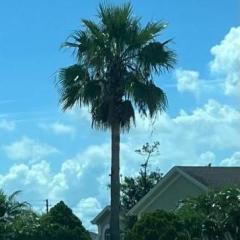






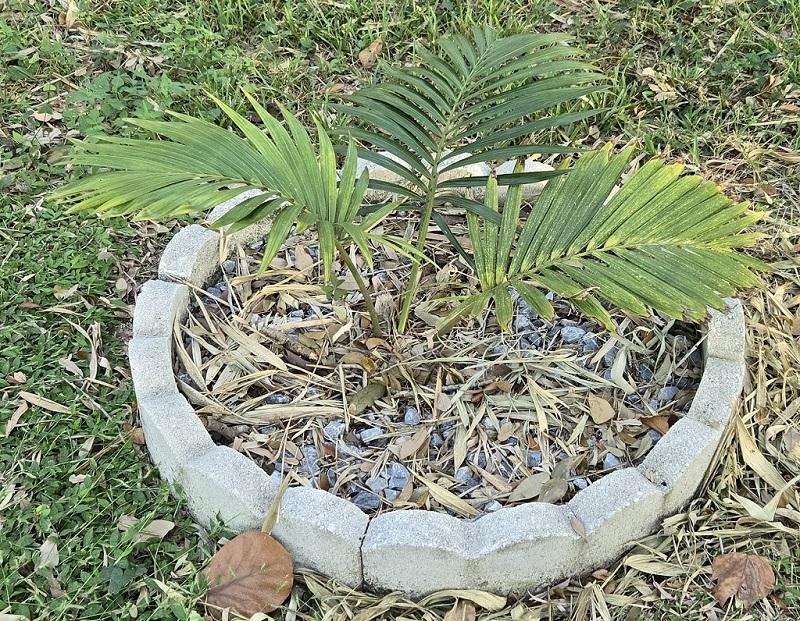

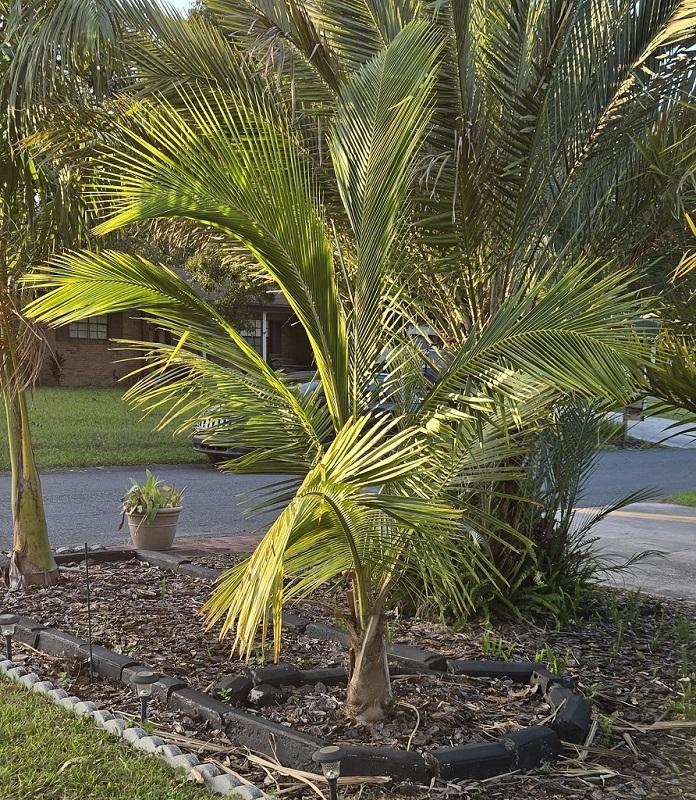


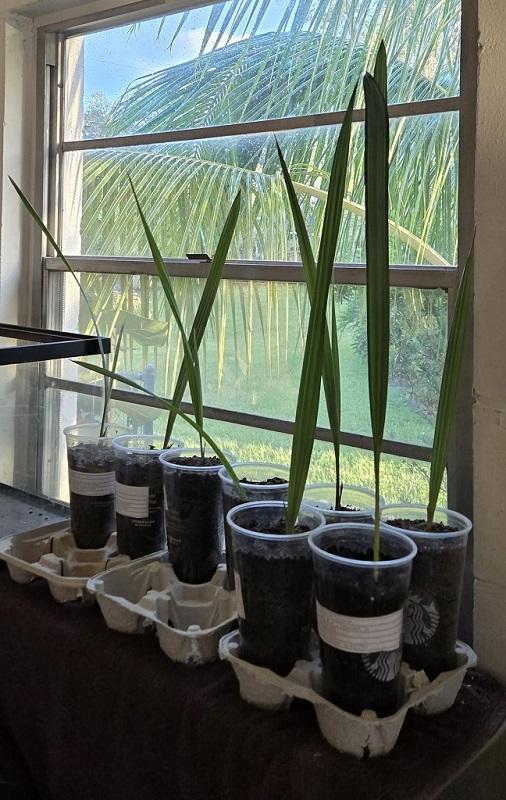
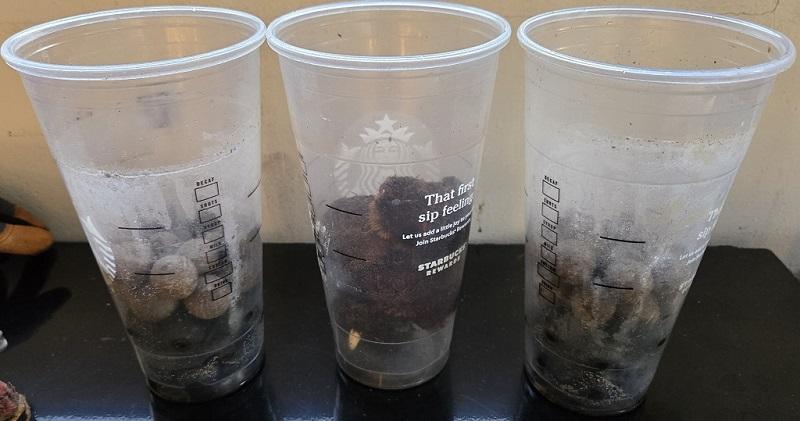

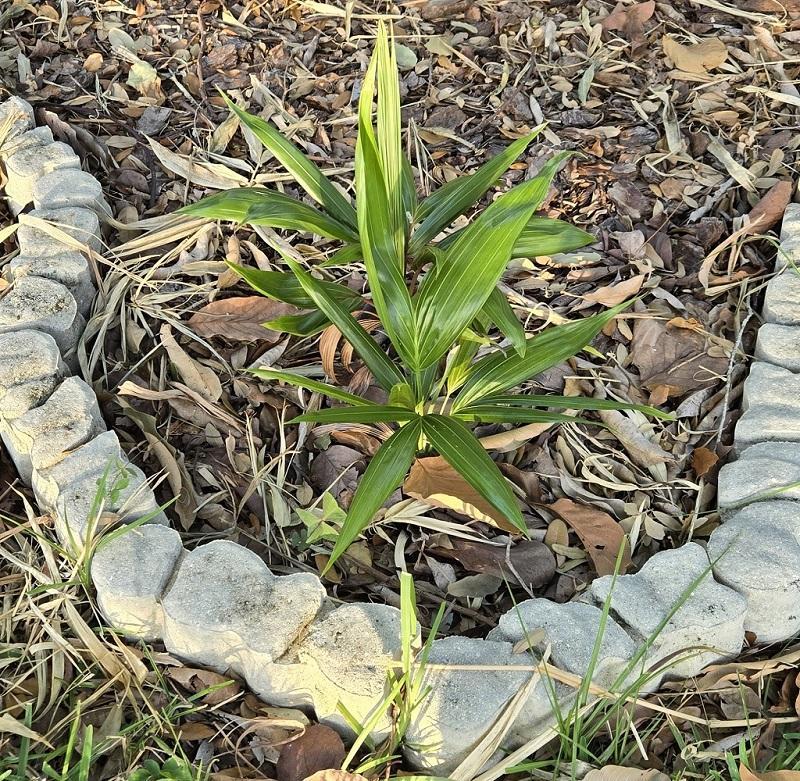






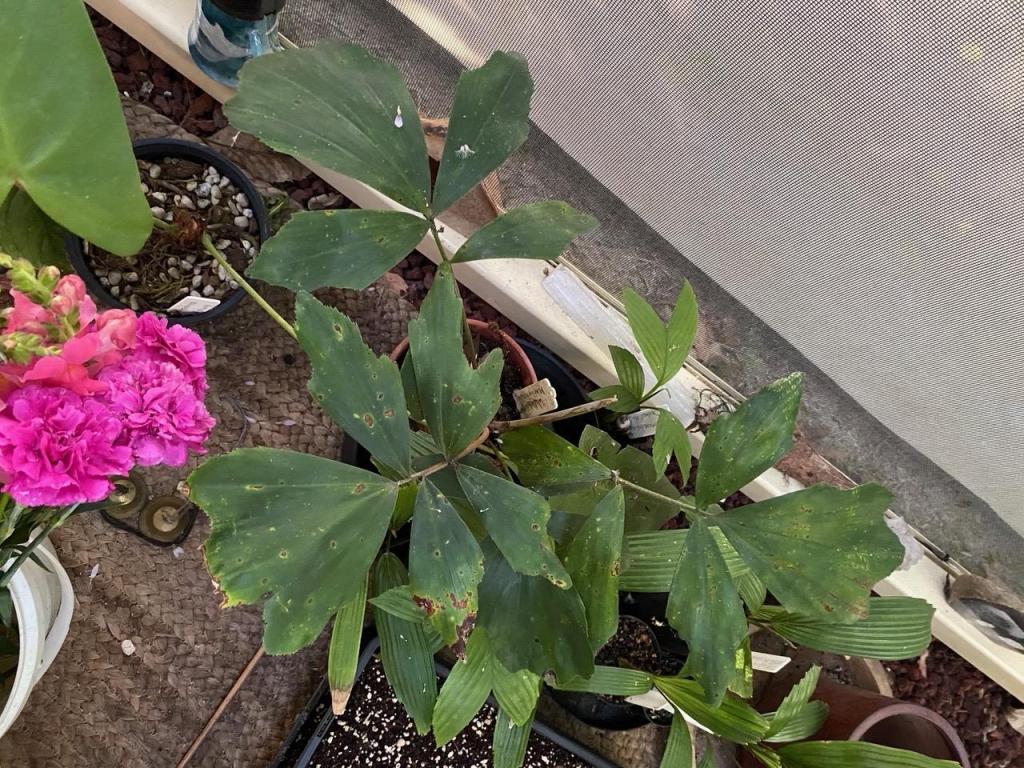
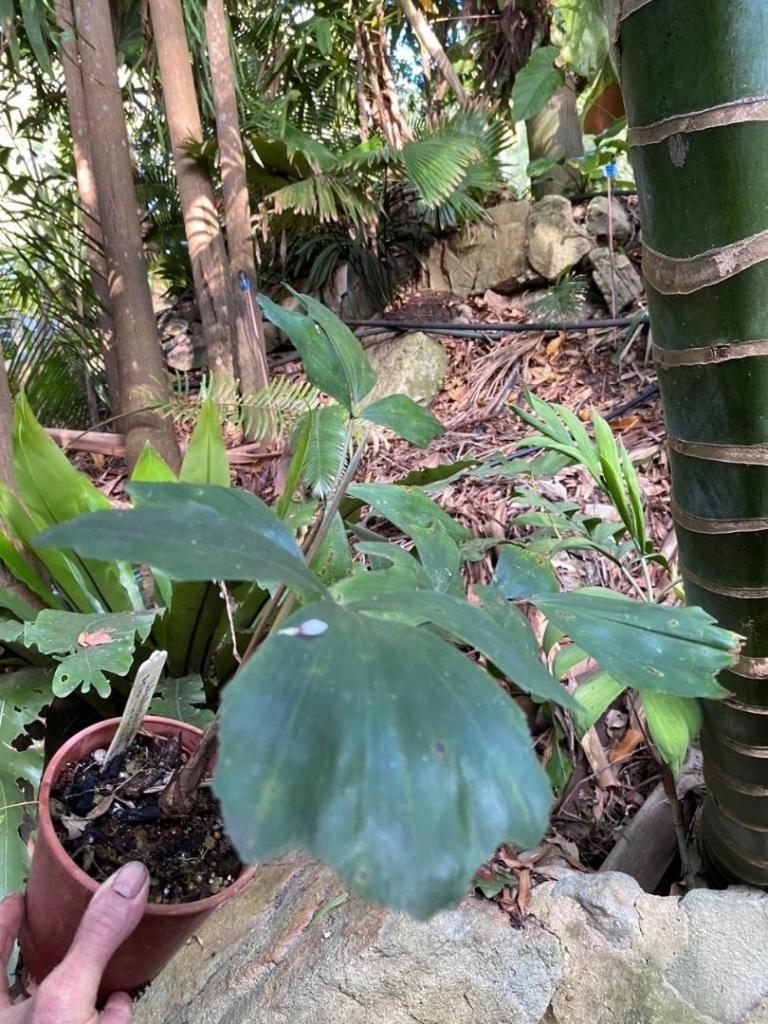




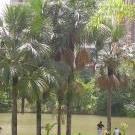


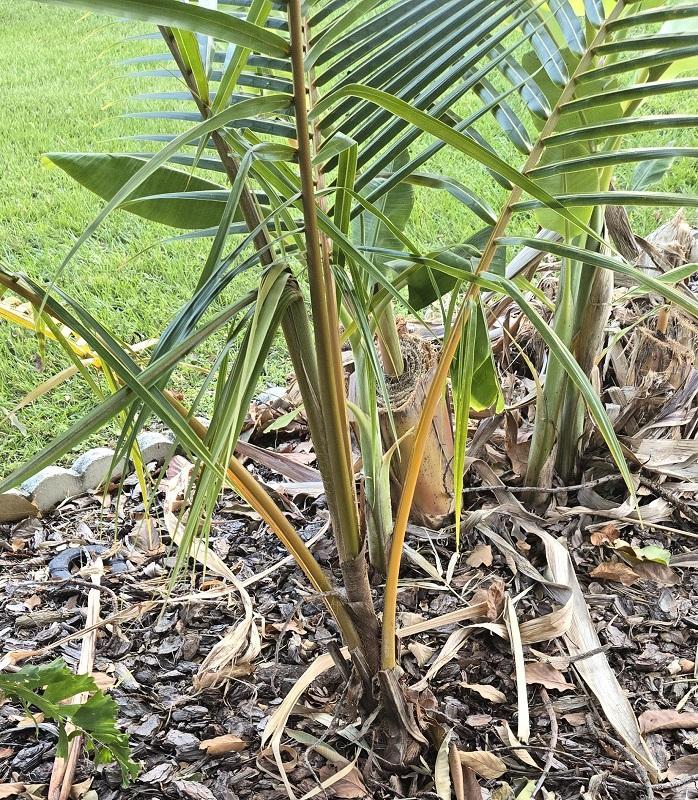



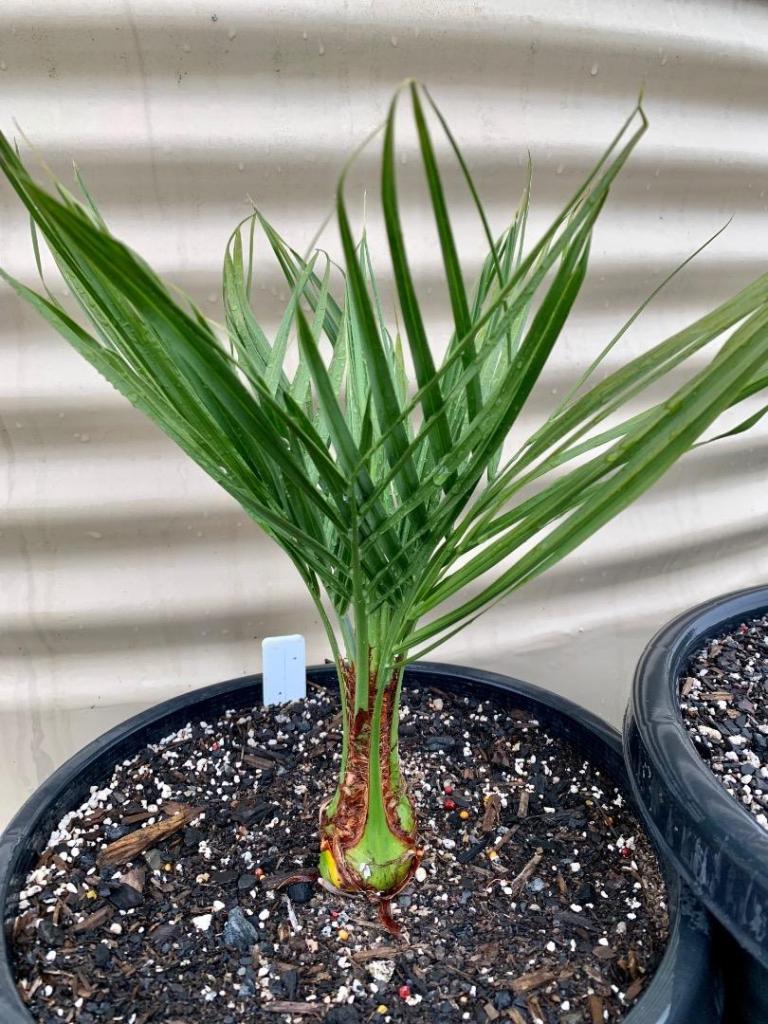
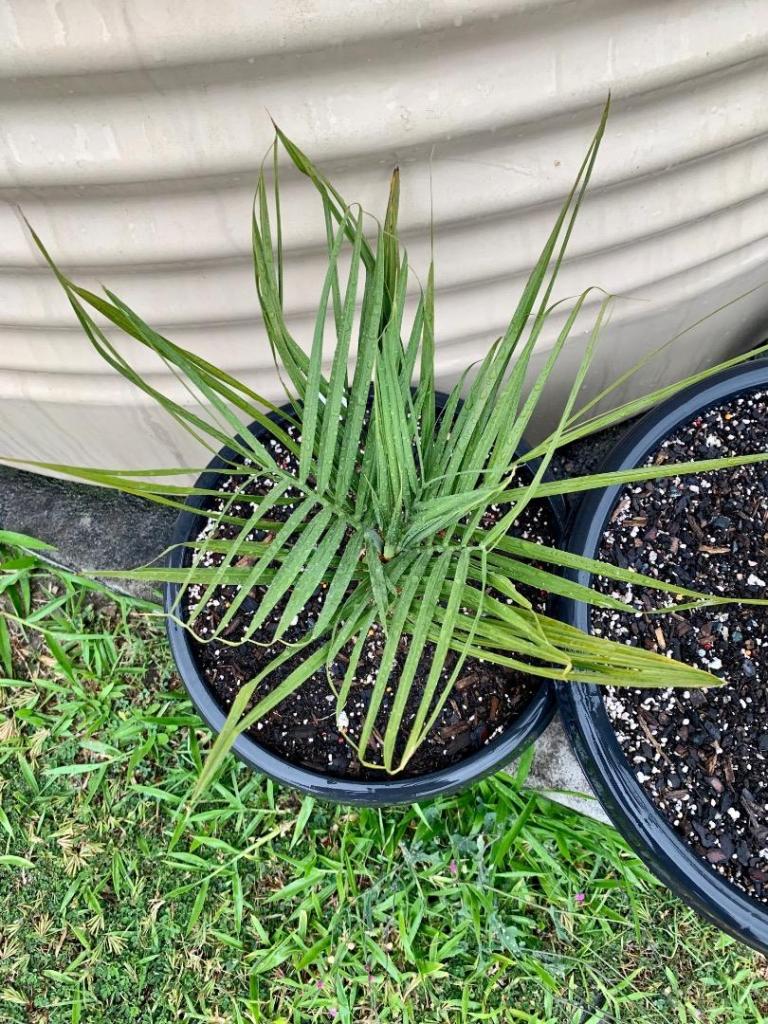

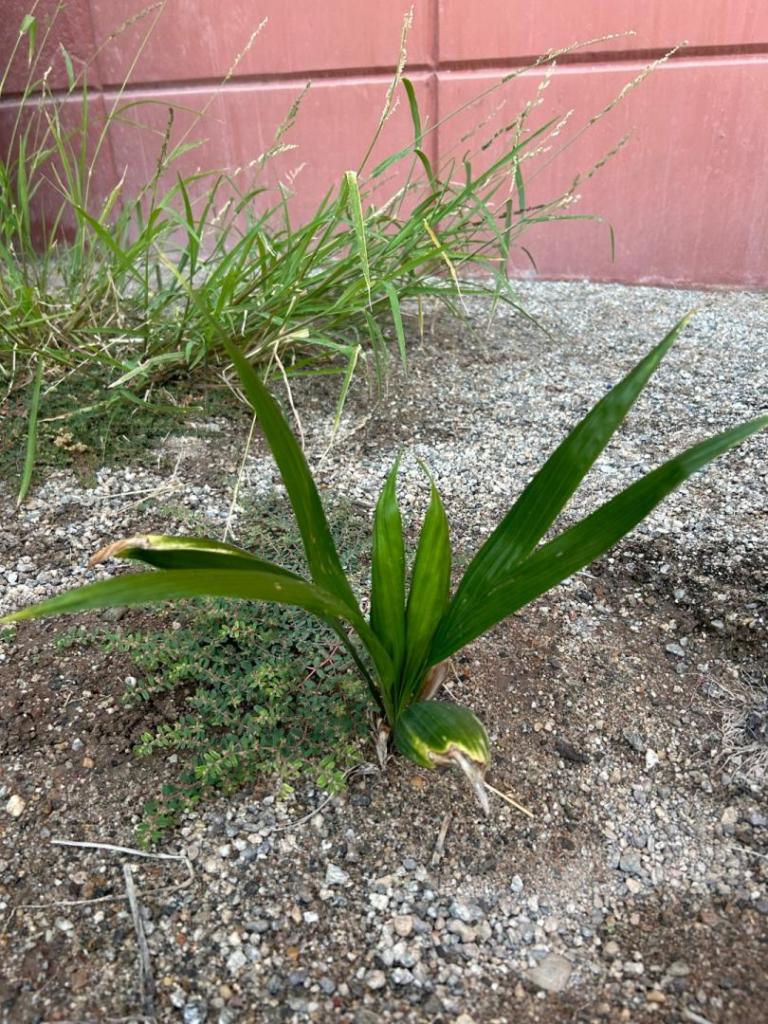
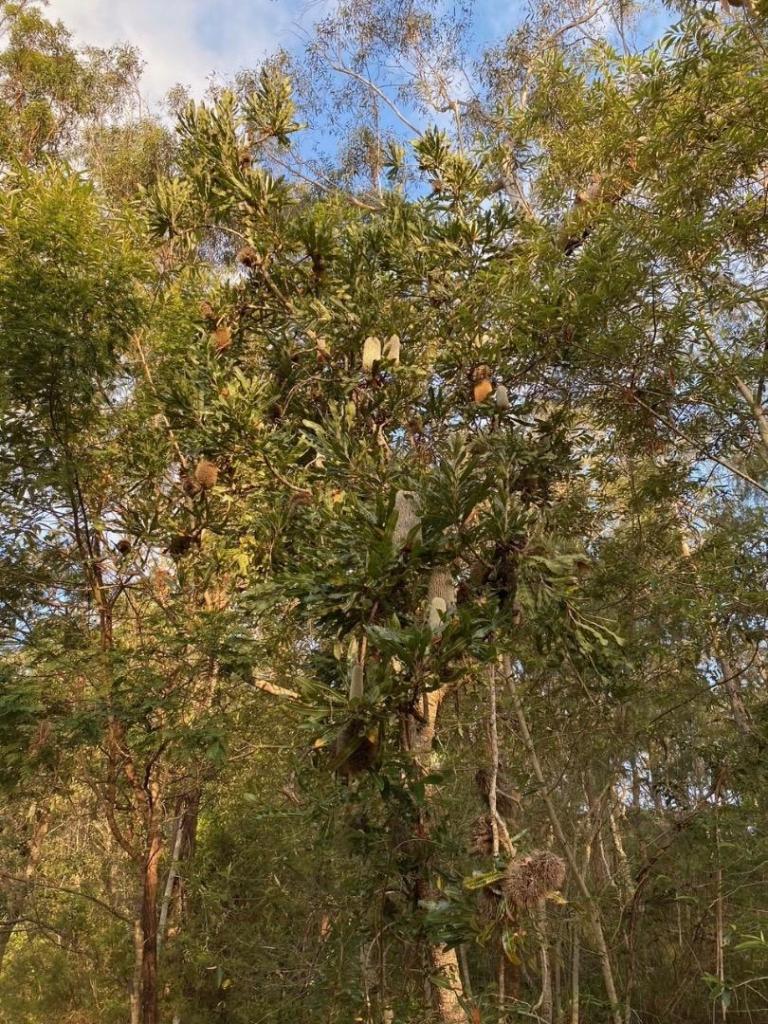
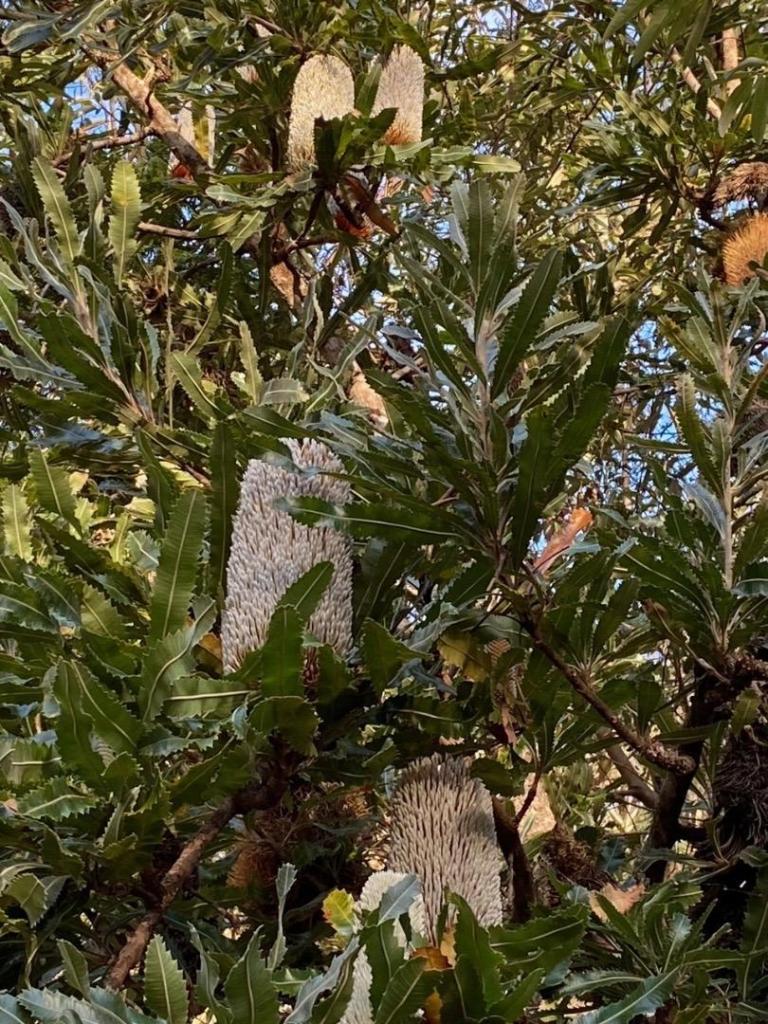



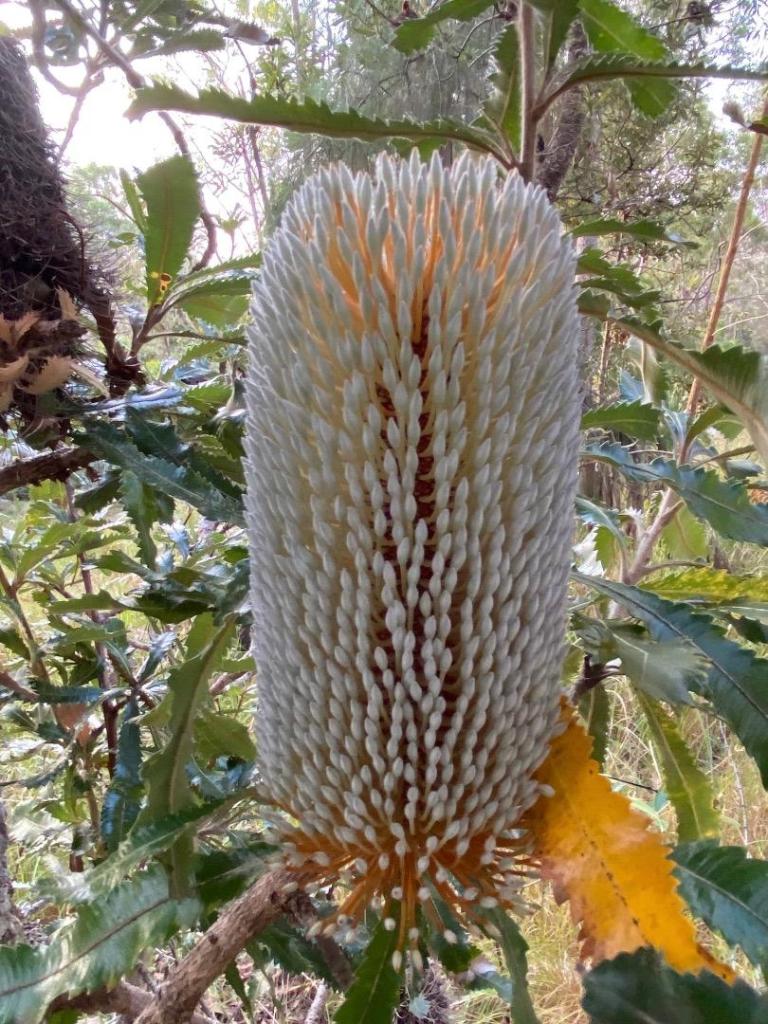
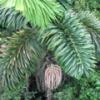

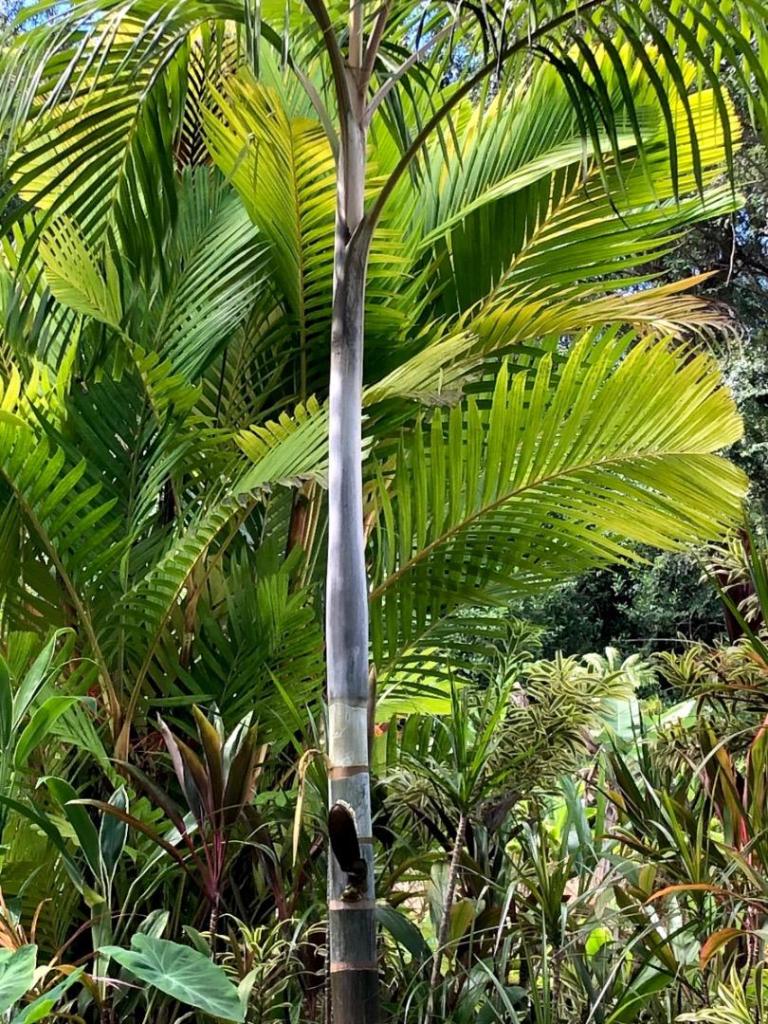






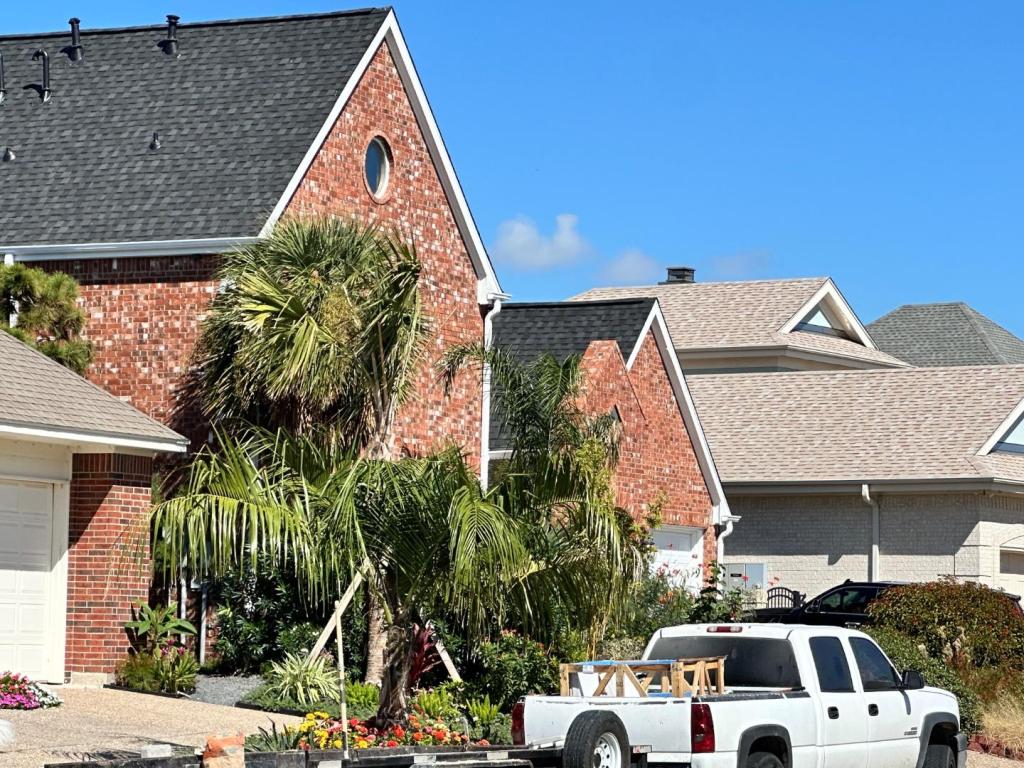
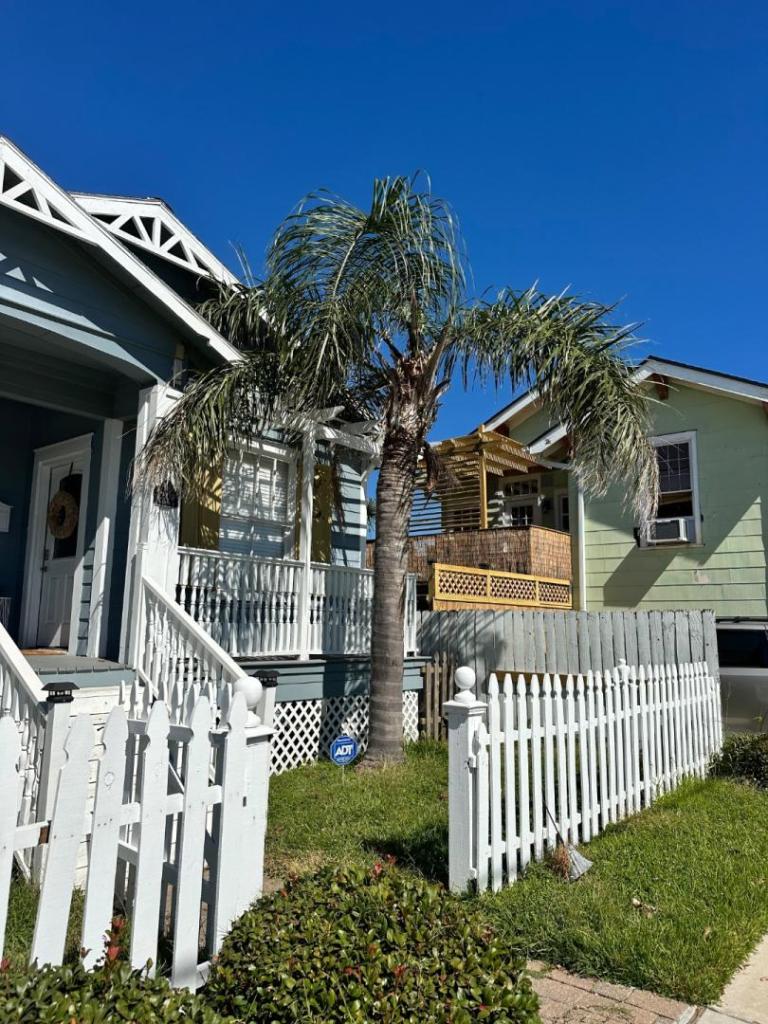
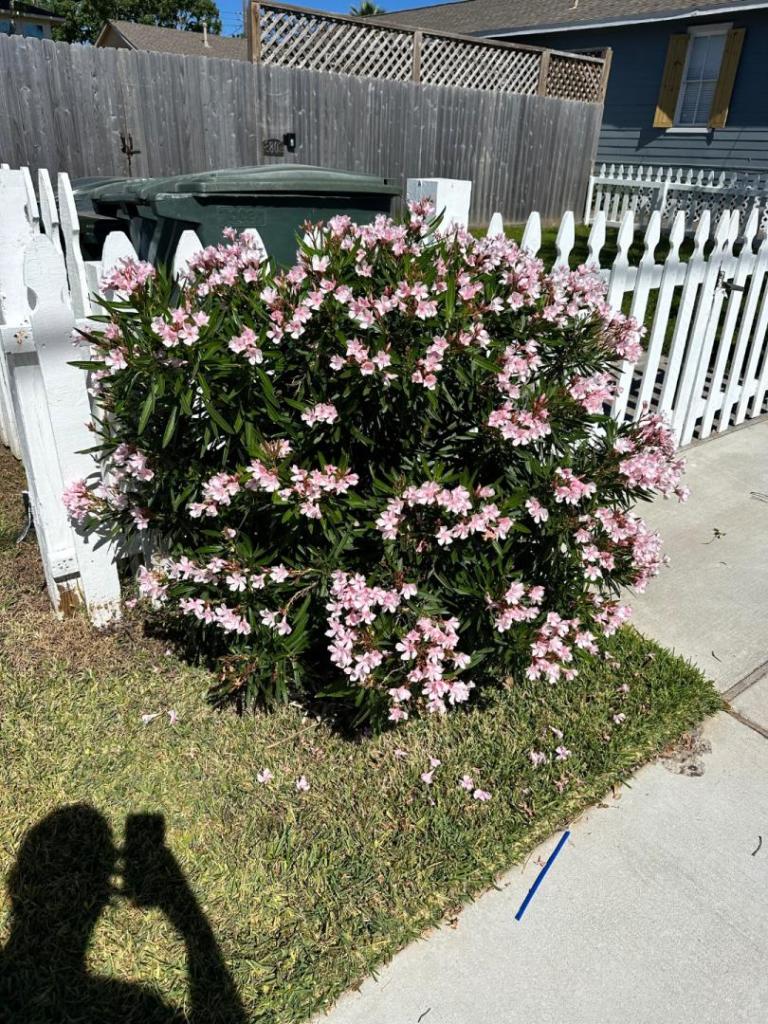

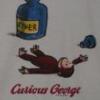

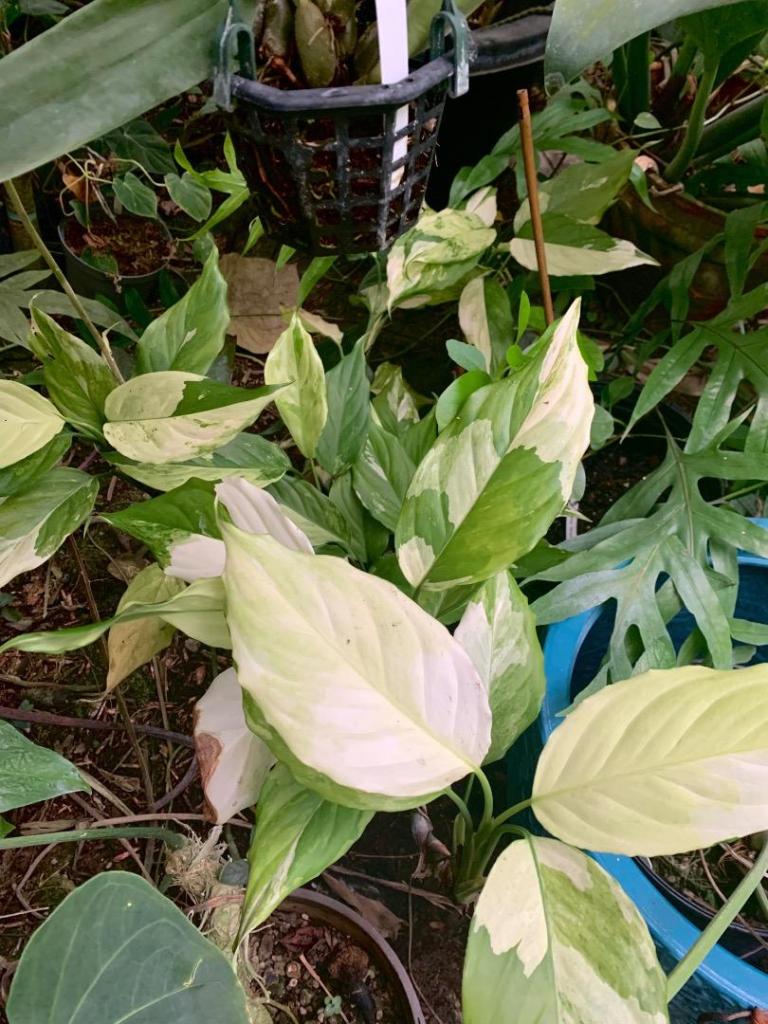
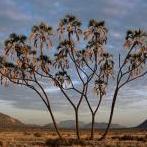
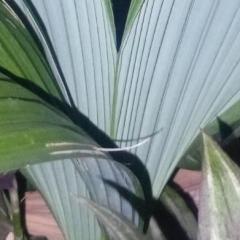
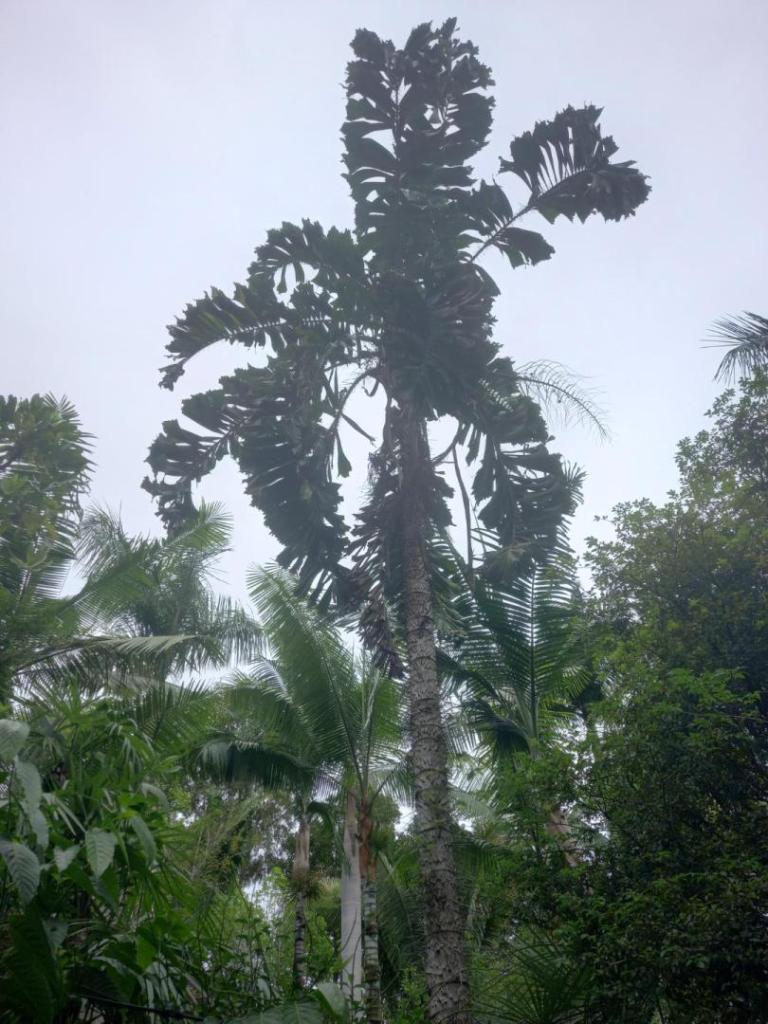



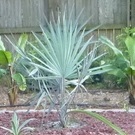

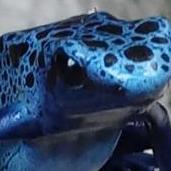
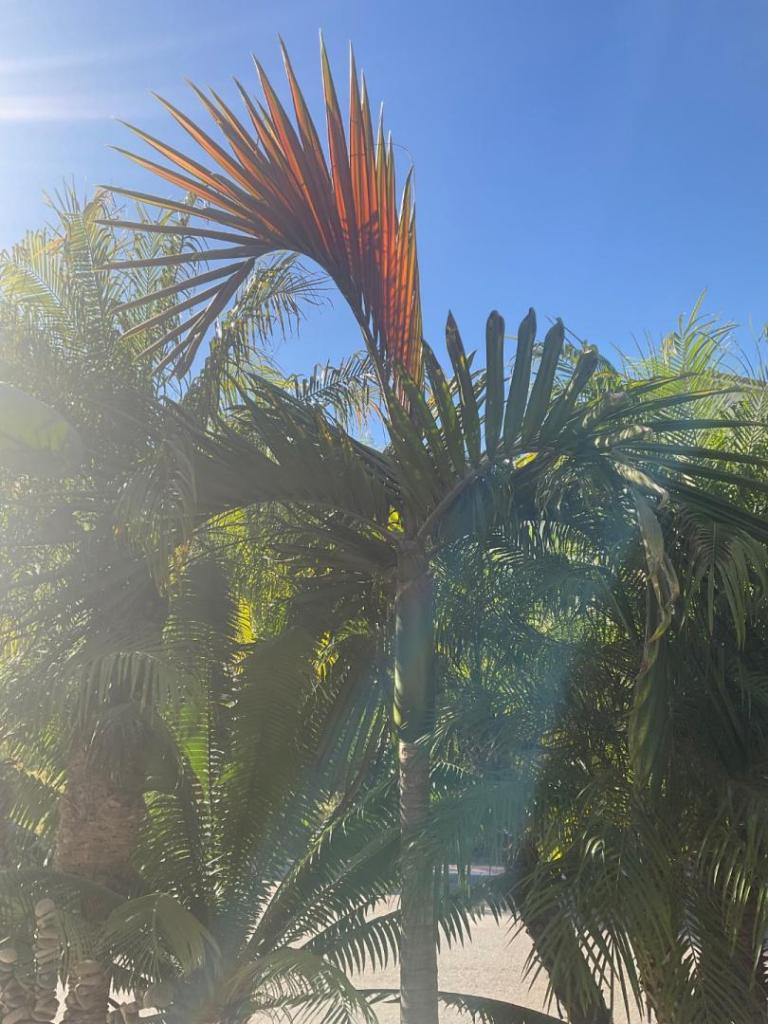

.thumb.jpg.304b32ca4398a111edf4ac525048111e.jpg)
